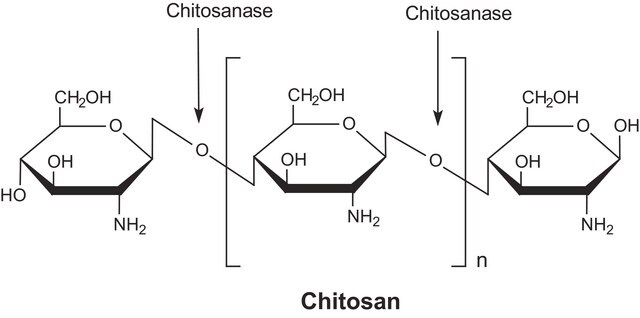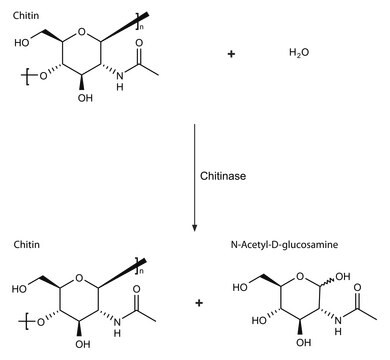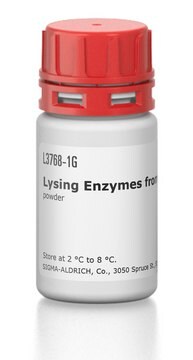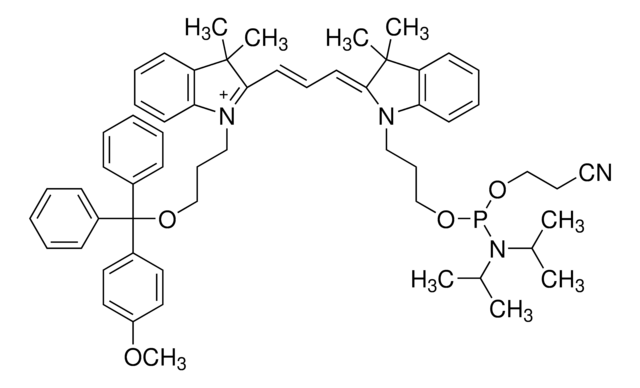220477-M
Chitosanase, Streptomyces sp. N174
Chitosanase, Streptomyces sp. N174, CAS 51570-20-8, is a member of a new class of enzymes with antifungal properties. Efficiently catalyzes the hydrolysis of acetylated chitosan (0 to 60%).
Synonim(y):
N-acetyloglukozoaminohydrolaza chitozanowa
About This Item
Polecane produkty
Poziom jakości
Formularz
liquid
aktywność właściwa
≥25 units/mg protein
producent / nazwa handlowa
Calbiochem®
warunki przechowywania
OK to freeze
avoid repeated freeze/thaw cycles
pI
7.5 (temperature optimum 65°C for 10 minutes; recommended temperature 37°C)
obecność zanieczyszczeń
chitinolytic ≤0.01%
proteases <0.25 Azocasein U/ml
temp. przechowywania
−20°C
Opis ogólny
Ostrzeżenie
Definicja jednostki
Postać fizyczna
Rekonstytucja
Inne uwagi
Cuero, R.G., and Osuji, G.O. 1995. Food Addit. Contam. 12, 479.
Fukamizo, T., et al. 1995. Biochem J. 311, 377.
Li, T., et al. 1995. Plant Physiol. Biochem. 33, 599.
Fukamizo, T., et al. 1994. Biochim. Biophys. Acta 1205, 183.
Osswald, W.F., et al. 1994. Plant Cell Physiol. 35, 811.
Informacje prawne
Kod klasy składowania
10 - Combustible liquids
Klasa zagrożenia wodnego (WGK)
WGK 1
Certyfikaty analizy (CoA)
Poszukaj Certyfikaty analizy (CoA), wpisując numer partii/serii produktów. Numery serii i partii można znaleźć na etykiecie produktu po słowach „seria” lub „partia”.
Masz już ten produkt?
Dokumenty związane z niedawno zakupionymi produktami zostały zamieszczone w Bibliotece dokumentów.
Nasz zespół naukowców ma doświadczenie we wszystkich obszarach badań, w tym w naukach przyrodniczych, materiałoznawstwie, syntezie chemicznej, chromatografii, analityce i wielu innych dziedzinach.
Skontaktuj się z zespołem ds. pomocy technicznej




